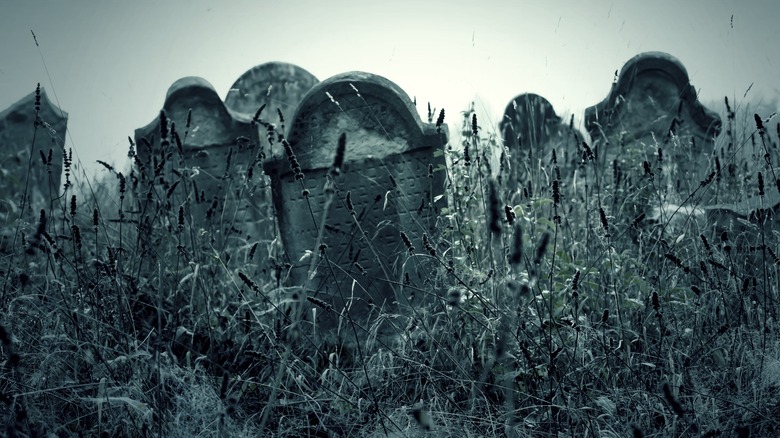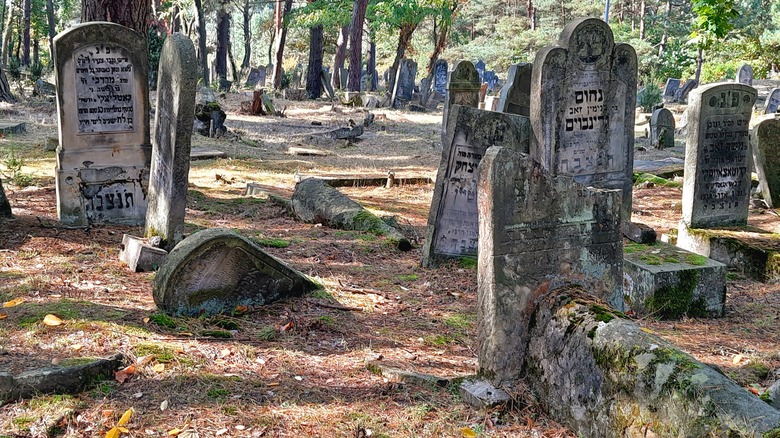What Happens If A Cemetery Is Abandoned?
For tens of thousands of years, humans and hominid species have buried the remains of their deceased loved ones. Early on, evidence suggests those burials took place in pits or sometimes deep in caves, according to Science Alert. The oldest known cave burial in Africa took place nearly 80,000 years ago, as the U.K.'s Natural History Museum notes. Over time, human remains were placed in tombs and catacombs, among other examples of ritualized mourning practices.
In the medieval era, the cemetery such as we know it today emerged in Europe — one centralized spot for a community's dead to be buried in caskets or coffins and where markers were placed in their memory. In recent years, traditional burial has become less and less common as more people choose the cheaper and eco-friendlier option of cremation. All that has left some to wonder: In a speculative future, if dead people are no longer buried, what might happen to our cemeteries and the centuries of loved ones who are buried there?
For an area to be considered a cemetery, the public must simply find it so
According to The Washington Post, by the year 2040 roughly 80% of all Americans will choose cremation over burial. This trend, combined with examples of poor financial planning on the part of property owners and cemetery management organizations, which are often non-profit, have put cemetery owners in a tough situation. In years past, they likely assumed, as the old saying goes, the only things we can count on are death and taxes. The need for cemetery plots would be never-ending. As it turns out, that might not be the case, at least as far as how human remains are cared for, according to Stalter Legal Services, LLC., death care law compliance specialists.
Economic upheavals have also worsened the financial outlook for many cemeteries. For an historic cemetery to be considered a cemetery, though, it relies less on whether people still choose to be buried there, or if the property owners can no longer afford the upkeep. According to U.S. Legal, discontinued cemeteries are instead judged on the following: whether or not the grounds are somehow still managed, if it's still generally recognizable as a cemetery, and whether the community which it serves still calls it one. So long as those requirements are satisfied, it's a cemetery, even if people are no longer buried there or if for some other reason burial ceremonies no longer take place there.
Some cemeteries do go bankrupt and are abandoned
Broadly speaking, if the three standards outlined can no longer be satisfied, or if the property owners declare bankruptcy, or if the property itself is foreclosed upon, then families of those buried may choose to have their loved one's remains moved. For some communities, another option is to take over the property for themselves, even though burials no longer occur there. Some state governments and local municipalities may also step in to handle all or part of the upkeep, as Today I Found Out notes.
If the plot is prepaid and the cemetery closes, then some jurisdictions allow families to pay for the hole to be dug and handle future maintenance costs for themselves. It's also important to note that in most cases, property rights on burial plots continue for perpetuity. If it can be proven that a burial plot belongs to a family it will remain so, regardless of the operational status of the cemetery. To help cover operational costs, some cemeteries are finding inventive new ways to pack more burial plots into their existing space and starting funds dedicated to future operation, among other strategies.


